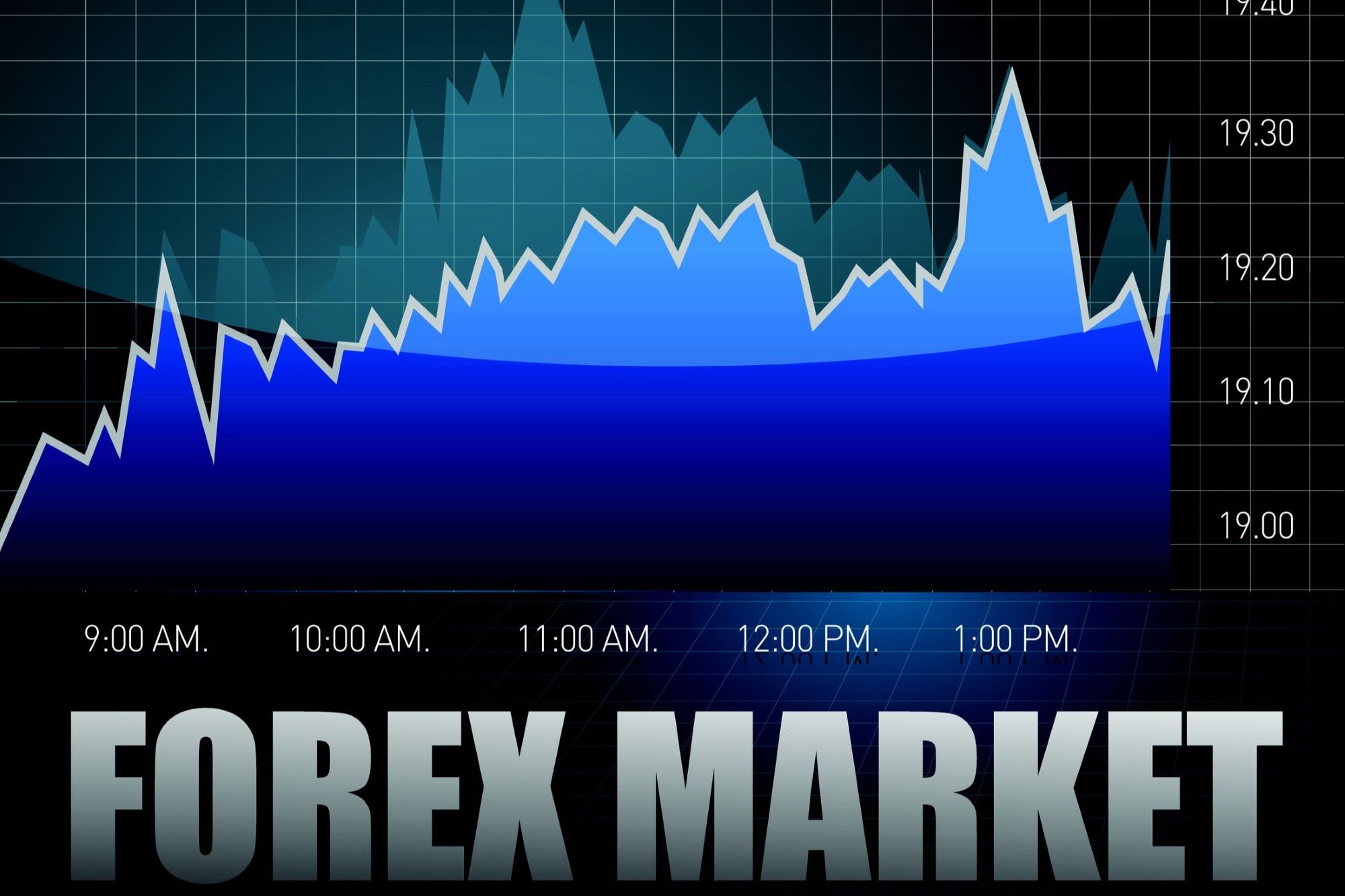Have you ever wondered how some traders seem to always know when to buy and sell in the Forex market? Well, much of that savvy can be attributed to algorithmic trading. In a world where milliseconds can make or break a trade, algorithmic trading has become a game-changer. In this article, we’ll dive deep into what algorithmic trading is, how it works, its advantages and challenges, and what the future holds for this fascinating field. So, let’s get started!
What is Algorithmic Trading
Algorithmic trading, in simple terms, refers to the use of computer algorithms to automate the process of executing trades in financial markets, such as Forex. This approach enables traders to leverage technology to perform trades at speeds and efficiencies that are simply unattainable for human traders. Imagine having a trading assistant that works tirelessly around the clock, analyzing vast amounts of market data in real-time, making calculations, and executing trades based on predefined criteria without ever needing a break. This not only increases the potential for profit but also minimizes the emotional decision-making that can often lead to poor trading choices.
Traders program these algorithms with specific rules and parameters, allowing them to act on market conditions as soon as they arise. For instance, an algorithm might be set to buy a currency pair when its price drops to a certain level and sell when it rises to another. The power of algorithmic trading lies in its ability to process data from multiple sources simultaneously, making it capable of identifying profitable opportunities in the market that would otherwise go unnoticed. As a result, it has become a vital tool in the arsenal of both institutional and retail traders, revolutionizing how trading strategies are implemented.
Brief History of Algorithmic Trading in Forex
The origins of algorithmic trading can be traced back to the 1970s when electronic trading began to take shape. During this period, the introduction of electronic communication networks (ECNs) started changing the way trades were executed. Traders began to use computers for order entry, which significantly reduced the time and effort involved in placing trades. However, it wasn’t until the late 1990s and early 2000s, with the rapid advancement of technology and the proliferation of the internet, that algorithmic trading gained substantial traction, particularly in the Forex market.
As more sophisticated software and high-speed internet became accessible, algorithmic trading evolved from a niche practice used primarily by large institutional investors to a mainstream strategy embraced by retail traders as well. This democratization of trading technology allowed individual investors to utilize algorithms to analyze market data, backtest strategies, and execute trades more efficiently. Today, algorithmic trading is a cornerstone of Forex trading strategies, playing a crucial role in the way markets operate, and accounting for a significant portion of trading volume across various platforms.
How Algorithmic Trading Works
The Basics of Algorithms
At its core, an algorithm is essentially a series of logical steps or instructions designed to accomplish a specific task. In the context of Forex trading, algorithms are programmed to analyze vast amounts of market data and identify potential trading opportunities based on established parameters. These algorithms are capable of processing multiple data points, such as price movements, trading volume, and even broader market sentiment, allowing them to make well-informed decisions that can be executed in real time.
For example, a trading algorithm may be programmed to react to specific market conditions, such as changes in interest rates, economic indicators, or geopolitical events. By analyzing these factors, the algorithm can determine when to buy or sell a currency pair. The speed at which these algorithms operate is crucial; they can execute trades within milliseconds, allowing traders to capitalize on fleeting opportunities that would be impossible to seize manually. This capability to swiftly analyze and act on market data sets algorithmic trading apart from traditional trading methods, providing a significant edge to those who utilize it.
Types of Algorithms Used in Forex
In the Forex market, a variety of algorithms are employed, each designed to meet specific trading objectives. Some of the most common types include trend-following algorithms, arbitrage algorithms, and market-making algorithms. Each of these algorithms serves a unique purpose and is crafted to exploit particular market conditions or strategies.
- Trend Following Algorithms: These algorithms focus on identifying and capitalizing on the momentum of prevailing market trends. They analyze historical price data to ascertain the direction of the market—whether it is trending upward, downward, or sideways—and execute trades accordingly. For instance, if a currency pair exhibits a consistent upward trajectory, a trend-following algorithm will trigger buy orders to capitalize on this momentum. This strategy can be likened to surfing; if you see a big wave coming, you want to ride it all the way to the shore!
- Arbitrage Algorithms: Arbitrage algorithms take advantage of price discrepancies that may exist between different markets or trading platforms. If a currency pair is priced lower on one platform compared to another, the algorithm will buy on the cheaper platform and sell on the more expensive one, effectively pocketing the difference. This is similar to shopping for the best price on a product; savvy shoppers compare prices across various retailers to ensure they get the best deal possible. Arbitrage trading can be highly lucrative, but it requires quick execution and precise timing to be successful, as these discrepancies often exist only for brief moments.
- Market Making Algorithms: These algorithms play a crucial role in providing liquidity to the Forex market. By placing both buy and sell orders, market-making algorithms help ensure that there are always available orders for other traders to execute. They profit from the bid-ask spread, which is the difference between the buying and selling price of a currency pair. This strategy helps to stabilize the market and can be particularly effective in less liquid trading pairs. Market-making algorithms continuously monitor market conditions and adjust their orders to respond to changing demand and supply dynamics.
By leveraging these various types of algorithms, traders can craft sophisticated strategies that align with their individual trading goals and risk tolerance, thereby enhancing their chances of success in the highly competitive Forex market.
Advantages of Algorithmic Trading in Forex
Speed and Efficiency
One of the standout features of algorithmic trading is its incredible speed. Algorithms can execute trades in mere milliseconds, making them significantly faster than any human trader. This speed is crucial in the fast-paced Forex market, where prices can change in the blink of an eye. For instance, if a trader relies on manual trading methods, they may miss out on a profitable opportunity simply due to the time it takes to analyze data and place an order. In contrast, algorithms are programmed to act instantly based on pre-set conditions, allowing them to capture fleeting opportunities that can vanish in seconds. This capability not only enhances the potential for profit but also helps traders manage their positions more effectively.
Moreover, the efficiency of algorithmic trading goes beyond just speed. Algorithms can handle vast amounts of data simultaneously, analyzing multiple variables and indicators without fatigue. This efficiency means that traders can deploy complex strategies that require constant monitoring of the market, something that would be nearly impossible for a human to do consistently. By automating this process, traders can focus on developing new strategies or improving existing ones, rather than getting bogged down in the minutiae of day-to-day trading activities.
| Advantage | Description | Impact on Trading |
| Speed | Algorithms execute trades in milliseconds. | Allows capturing fleeting market opportunities. |
| Efficiency | Can analyze vast amounts of data simultaneously. | Enables complex strategies without fatigue. |
| Emotional Control | Removes emotional decision-making from trading. | Leads to more rational, disciplined trading. |
| Backtesting Capabilities | Traders can test algorithms against historical data. | Identifies weaknesses and optimizes performance. |
Elimination of Emotional Trading
Another significant advantage of algorithmic trading is the elimination of emotional decision-making. In the world of trading, emotions such as fear and greed can lead to rash and often detrimental choices. For example, when the market takes a sudden turn, many traders might panic and sell off their positions without assessing the situation thoroughly. In contrast, algorithmic trading relies on pre-defined rules and parameters that dictate when to buy and sell, regardless of market conditions or emotional fluctuations. This systematic approach ensures that trades are executed based on logic rather than emotion, allowing for more consistent and rational trading decisions.
Furthermore, by removing emotions from the equation, algorithmic trading fosters a more disciplined trading environment. Traders can stick to their strategies without second-guessing themselves during periods of high volatility or uncertainty. This level of discipline is crucial for long-term success in trading, as it helps traders avoid the pitfalls of impulsive decision-making that can erode capital over time. In essence, algorithmic trading serves as a safeguard against the unpredictable nature of human emotions, allowing traders to maintain a clear and focused approach to the market.
Backtesting and Optimization
Before implementing an algorithm in a live trading environment, traders can take advantage of backtesting. This process involves testing the algorithm against historical market data to evaluate its performance and effectiveness. By simulating trades based on past data, traders can identify potential weaknesses and areas for improvement within their algorithm. This practice is akin to a dress rehearsal before a major performance, allowing traders to refine their strategies and make necessary adjustments to optimize performance.
Backtesting is not only beneficial for assessing the viability of an algorithm but also for building trader confidence. Knowing that an algorithm has been tested rigorously against historical data provides a level of assurance that the strategy may perform well in real market conditions. Additionally, backtesting can reveal how an algorithm would have responded to different market scenarios, allowing traders to fine-tune their approaches and maximize profitability. Overall, this practice enhances the robustness of trading strategies, leading to more informed and effective trading decisions.
Risks and Challenges of Algorithmic Trading
Technical Failures
While algorithmic trading boasts numerous advantages, it is not without its risks, particularly concerning technical failures. Algorithms, while efficient, can experience glitches or bugs that may lead to erroneous trades. A sudden system failure or network outage can disrupt trading activities, resulting in significant financial losses. For instance, if a trader’s algorithm is designed to sell a currency pair when it reaches a certain price point, a technical malfunction could cause it to either fail to execute the trade altogether or execute it at an undesirable price. This unpredictability underscores the importance of robust systems and infrastructure to support algorithmic trading.
Additionally, the reliance on technology means that traders must also be vigilant about the hardware and software they use. A malfunctioning server, outdated software, or poor internet connectivity can all jeopardize trading performance. Just like relying on a GPS for navigation can lead to being lost if the system malfunctions, traders can find themselves in precarious situations if their algorithms fail to function as intended. Consequently, traders must invest in reliable technology and maintain a proactive approach to monitoring their trading systems to mitigate these risks.
Market Volatility
Another inherent risk associated with algorithmic trading is its reaction to market volatility. The Forex market is notoriously volatile, with sudden price fluctuations occurring for a variety of reasons, including economic data releases, geopolitical events, or unexpected news. In these instances, algorithms may react unpredictably, executing trades based on historical patterns that no longer apply. For example, an algorithm designed to capitalize on a specific trend might mistakenly execute trades during a period of extreme volatility, leading to substantial losses instead of profits.
Moreover, the speed at which algorithms operate can be a double-edged sword during volatile market conditions. While they can react quickly to price changes, this rapid execution can also result in slippage, where trades are executed at prices different from those expected due to rapid market movements. This discrepancy can further exacerbate losses, particularly in fast-moving markets. As such, traders must exercise caution and implement risk management strategies to protect their capital when utilizing algorithmic trading in unpredictable market environments.




